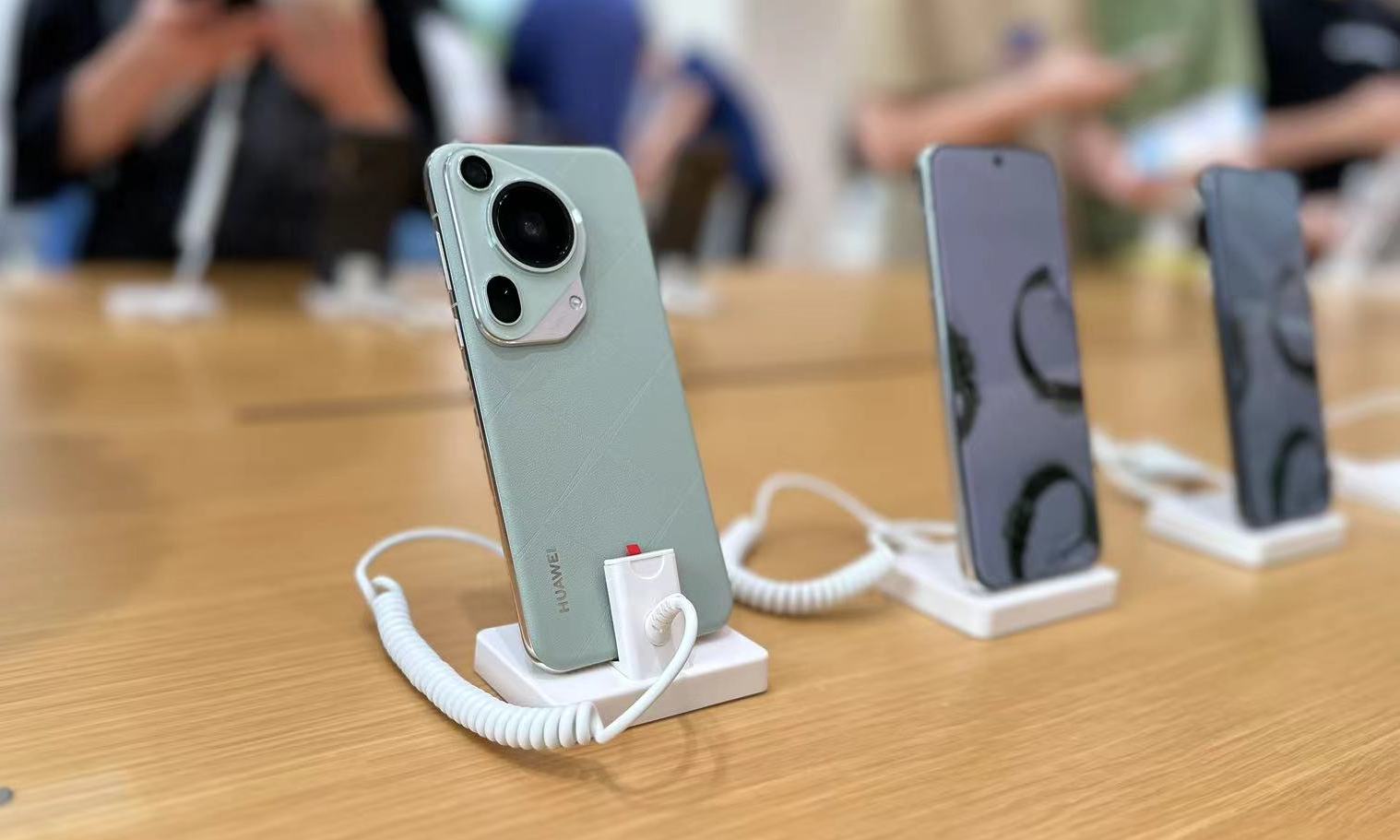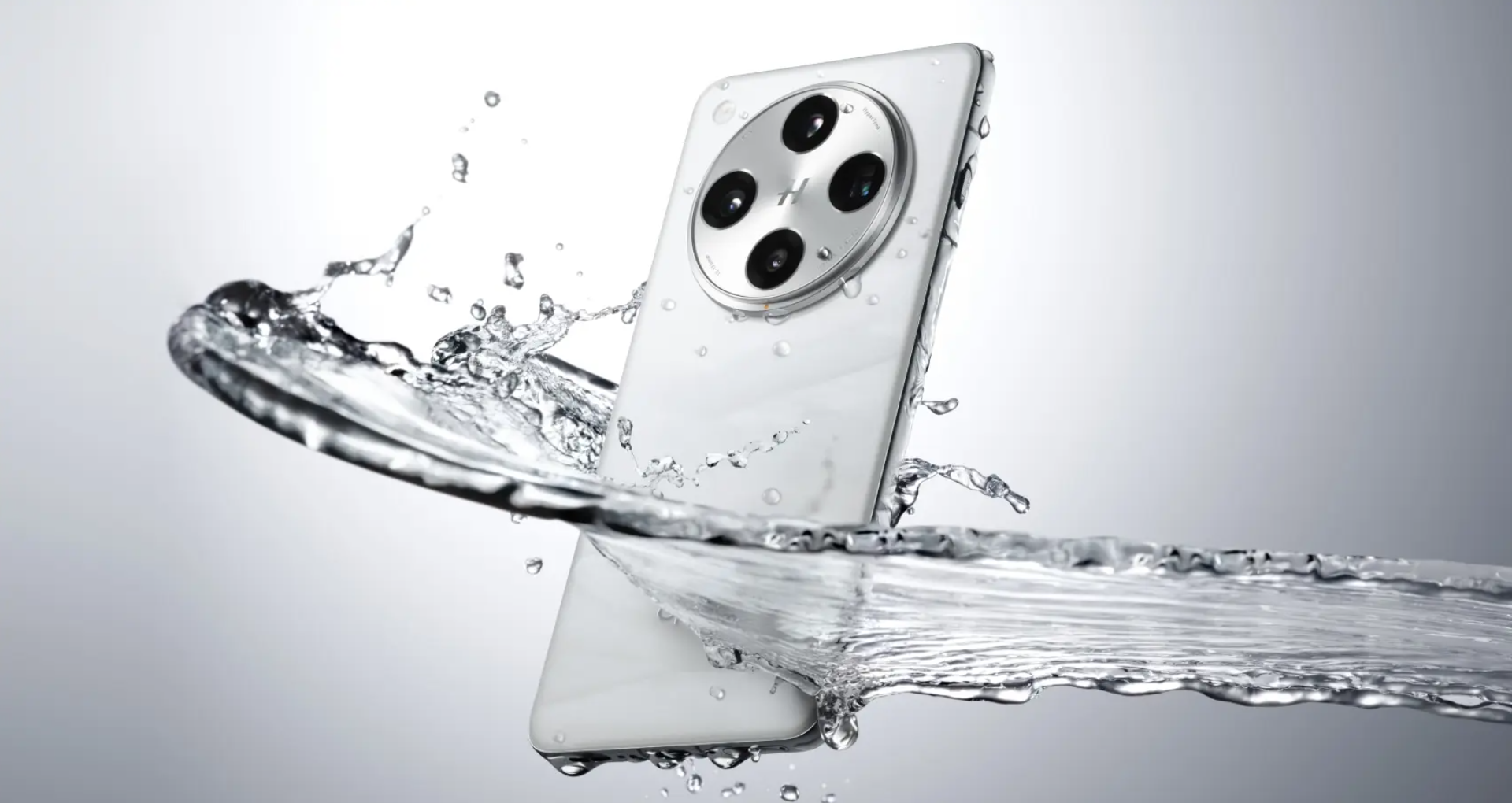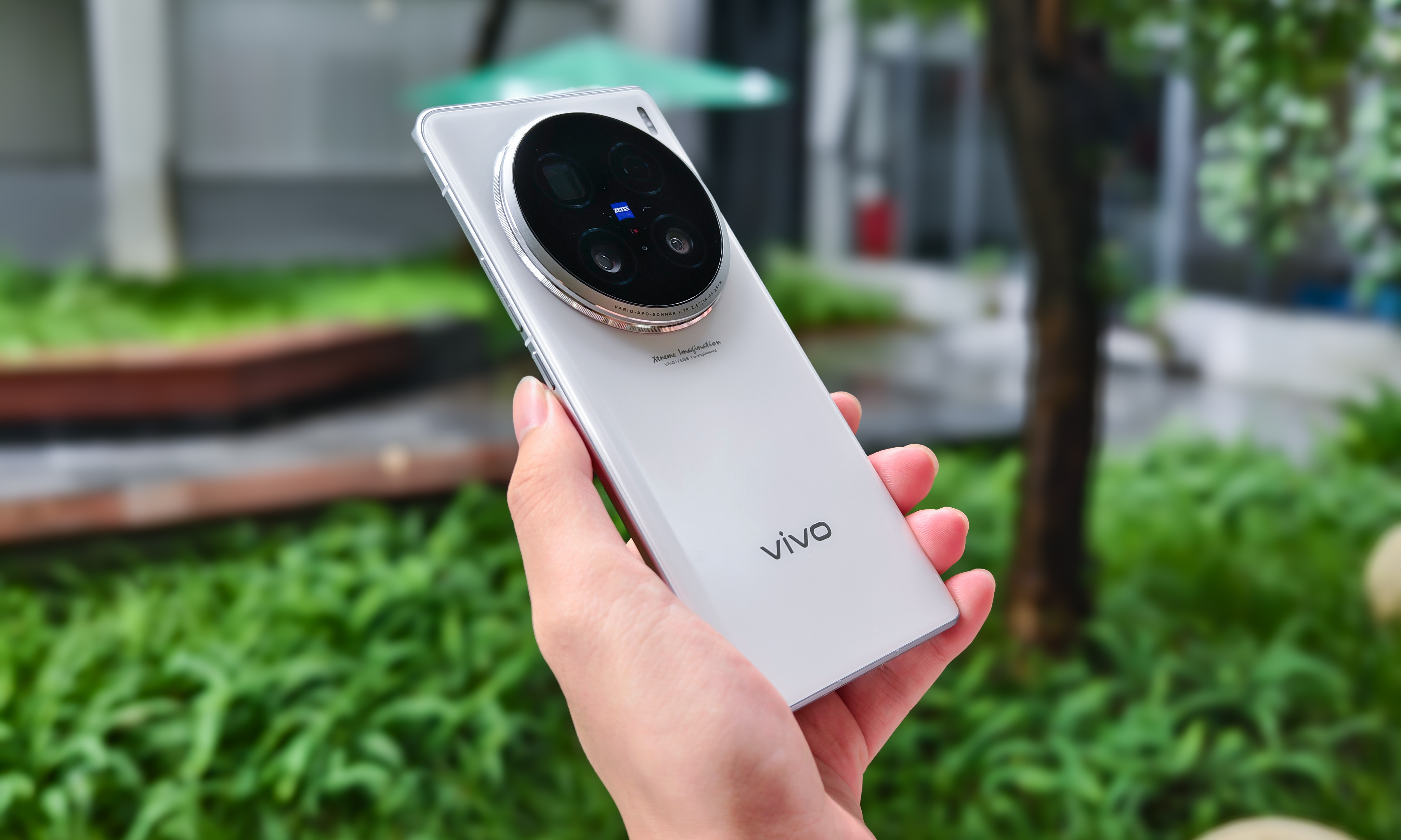Grab it at 4000 yuan! Domestic mobile phones are high-end, and Apple is losing ground?
![]() 11/15 2024
11/15 2024
![]() 381
381
Complain about flagship phones being too expensive and not worth buying, but buy them faster than anyone else?
Recently, market research firm Counterpoint Research released data on the high-end domestic mobile phone market in 2024. With an overall market sales increase of 4% year-on-year, models priced above 600 USD (approximately 4300 yuan) saw an 8% increase in market share. Coupled with the firm's data showing a 13% decline in iPhone sales during the same period, it can be concluded that the increase in high-end mobile phone market share is mainly attributed to domestic mobile phone manufacturers.
The high-endization process of the domestic mobile phone market is accelerating, with more and more consumers accepting flagship models priced above 4000 yuan. However, in the comments section of this news, many netizens expressed that high price does not equal high-end, denying that domestic mobile phone manufacturers have reached the high-end market, and expressing dissatisfaction with the continuous price increases of Android flagship phones.
From the consumer's perspective, it is not important whether domestic mobile phones have successfully established a high-end image. What matters is whether consumers benefit when domestic mobile phones aim for the high-end market and flagship models continuously increase in price.
iPhone is no longer the sole dominator of the high-end market
There was a time when iPhone was synonymous with high-end mobile phones, and many consumers were willing to sell their organs to buy one, even giving iPhone the nickname of "kidney phone." It was not until the rise of Huawei's Mate and P (Pura) series that the era of iPhone's dominance of the high-end market ended. Around 2020, Huawei's high-end mobile phone sales in the domestic market were on par with those of iPhone. However, this good situation did not last long. Due to various reasons, Huawei encountered production challenges, and the Mate series had to temporarily suspend updates.
Fortunately, Huawei is not alone. Domestic brands such as OPPO, vivo, Xiaomi, and Honor are also continuously exploring the high-end market and have achieved some results through flagship experiences.
The actual mobile phone experience comes from two aspects: hardware configuration and system and ecosystem. The hardware aspect has always been a strength of domestic mobile phones. When iPhone 11 was still using a 720P screen, domestic mobile phones were already experimenting with 2K 90Hz screens. Even today, the iPhone 16 standard version still does not support high refresh rates, almost becoming a laughingstock among Android users.

(Source: Lei Technology Production)
Apple's A-series processors once led in performance compared to Android phones. However, with the efforts of Arm, Qualcomm, MediaTek, TSMC, and other industry players, Snapdragon and Dimensity flagship chips now perform on par with A-series processors. Once, mobile games like "Genshin Impact" struggled to run at 40 frames per second, but now flagship phones can stably run at 60 frames per second with high graphics quality, and some manufacturers have added super-resolution and super-frame features to further enhance game graphics and fluidity.
Android flagships and iPhones have their pros and cons in the imaging field. iPhones have a slight edge in video recording, while Android phones slightly outperform in photography. Additionally, Android flagships generally have higher optical zoom ratios, giving them an advantage in capturing distant scenes.
At the software level, there is not much difference between Android and iPhone in terms of functionality when viewed solely. In recent years, iOS has added many new features, such as customizable app icon arrangements, game mode, app locking, hidden apps, etc. However, the closed iOS and open Android each have their strengths. I have used both systems for many years and have not noticed significant differences.

(Source: Lei Technology Production)
As the mobile phone industry has developed, domestic manufacturers have made significant progress. The flagship experience is now on par with iPhone, and prices have a definite advantage over iPhone. The newly released iPhone 16 series starts at 5999 yuan, while Android phones, despite price increases, generally start at less than 4599 yuan. Domestic consumers can purchase flagship phones with experiences comparable to iPhone at prices much lower than iPhone. The only thing domestic flagships may lack is "brand," with a high-end image temporarily inferior to Apple's.
Netizens complain about the price increases of domestic flagships, perhaps because they cannot stand that domestic brands originally positioned in the mid-to-low end have actually risen to prominence and climbed the high-end market step by step. The underdog triumph is a classic trope in novels, but not everyone likes it.
The rise of domestic mobile phone manufacturers' influence is not limited to the high-end market. Through mass production and technological iteration to reduce costs, some configurations originally exclusive to flagship phones are gradually being introduced to lower models. Features such as periscope telephoto lenses, super-fast charging, and 2K screens have been introduced to mid-to-high-end models. The upcoming Honor 300 series is likely to come equipped with ultrasonic fingerprint technology, which many flagship phones still lack.
Considering the recent price changes of newly released flagship phones and the configurations of mid-range phones, it is not difficult to see that domestic mobile phone manufacturers' high-end strategy is about to enter its third stage.
The third domestic push for high-end products, looking up to Apple becomes a thing of the past
Before 2020, domestic mobile phone manufacturers were in the first stage of their high-end strategy, with major brands still exploring directions and lacking clear plans for future development. During this period, domestic mobile phone manufacturers developed many products using iPhone as a benchmark, with some flagships even being called "iPhone Lite."
From 2020 to the present, domestic mobile phone manufacturers are in the second stage of their high-end strategy. Android phone manufacturers have raised the starting prices of their flagship phones to around 3999 yuan, and their hardware configurations have become more impressive.
During this period, OPPO relaunched the Find series and transformed it into the current Find X series, with the Reno series also rising in status from mid-range to secondary flagship. vivo elevated the X series to flagship status, discontinuing the NEX series that previously held this position. Xiaomi's digital series has gradually solidified its high-end position, becoming a benchmark for flagship phones in a sense. In addition, major manufacturers have continuously adjusted the positioning and product planning of their sub-brands, with brands like Redmi, iQOO, and realme growing rapidly.
High price does not equal high-end, but high-end phones cannot be priced too low, as it may affect product positioning. The domestic mobile phone manufacturer that has most obviously chased Apple in terms of pricing is undoubtedly Huawei, with the Pura 70 series starting at 5499 yuan, comparable to the iPhone 16 series.

(Source: Lei Technology Production)
The price increases of new flagship series such as Xiaomi 15, OPPO Find X8, and vivo X100 at the end of this year mark the beginning of the third stage of domestic brands' high-end strategy. Undoubtedly, the prices of Android flagships from major brands will continue to rise in the future until they are on par with Apple. After all, as flagship phones, if they aim to match Apple in quality, their prices must also catch up with Apple's, rather than being low-cost alternatives.
However, consumers need not worry too much. Although flagship phones generally do not emphasize cost-effectiveness, domestic flagship phones will still offer better value than iPhones. The rise of domestic suppliers has given domestic mobile phone manufacturers more confidence to compete in the high-end market. In previous years, flagship phones basically came standard with Samsung screens and Sony sensors. Nowadays, brands like BOE, CSOT, and OV have become suppliers of flagship phone components.
Before the rise of domestic supply chains, overseas supply chains were dominant. Xiaomi offended Samsung, and Lei Jun had to travel to South Korea to apologize three times. Huawei also faced supply disruptions due to its phones selling too well. After the rise of domestic supply chains, domestic mobile phone manufacturers can focus on product development without worrying about supply disruptions or targeting.

(Source: OPPO)
Although the market share of domestic flagship phones continues to rise, major brands have not forgotten to maintain the mid-to-low-end market. Various cost-effective mid-to-low-end models are constantly being released, and many flagship chips are used in mid-range phones priced at two or three thousand yuan the following year, truly realizing a high-end performance experience at an affordable price.
The mid-to-high-end market, which is gradually becoming the main sales driver for mobile phone manufacturers, is also receiving higher attention from them. Various configurations originally exclusive to flagship phones are being crammed into these models. However, the gradual price increase of mid-to-high-end models, replacing the original mid-range flagship position, has some consumers worried. In today's trend of rising prices, will there still be many cost-effective models available to us?
The trend of mobile phone price increases is inevitable, and it is more cost-effective to buy early
Consumers complain about flagship phone price increases out of fear that they will not be able to buy cost-effective models with high specifications at low prices in the future, leading to increased purchasing costs. In fact, we don't have to worry about these issues. The main cost of mid-to-low-end phones is concentrated in the chip. As TSMC and Samsung's process technologies mature and yield rates improve, chip costs will gradually decrease. Coupled with the decreasing costs of screens and sensors, these cost reductions will also be reflected in prices, and there is still significant room for improvement in the configurations of mid-to-low-end models in the future.
Moreover, the domestic mobile phone industry is extremely competitive, and there is no shortage of manufacturers willing to produce cost-effective products to capture the market. Under the competition among major brands, as phone prices rise, configurations will continue to improve, and the vacated market will be filled by new models. In recent years, as phone prices have continued to rise, the experience enhancements of models at the same price point have been visible to the naked eye.

(Source: Lei Technology Production)
The continuous price increases of domestic mobile phone manufacturers' flagship phones and the acceleration of high-end construction will ultimately result in products covering a wider price range, from flagship phones comparable to the iPhone 16 Pro Max priced at tens of thousands of yuan to entry-level smartphones priced at a few hundred yuan, all bearing the presence of domestic brands.
The only regret may be that with a budget of over 4000 yuan, you can now buy a flagship phone, but in the future, you may only be able to buy a mid-to-high-end model. Although the configurations of these mid-to-high-end models will also reach flagship levels by that time, if you want the prestige of a flagship phone, you will still need to pay more.
Of course, although mobile phones have a prestige factor, the more important thing when choosing a product is one's own needs. What suits you best is the best. Although flagship phones are excellent, many of their features may not be used. Mid-to-high-end models equipped with flagship chips may not lag behind flagship phones in daily use.
Source: Lei Technology








